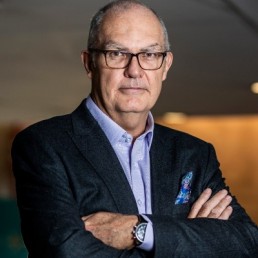It may seem to you that the world after the pandemic is much the same as before — only with more stress and shorter timescales. I disagree. Our research shows that you need to focus on different things and adopt them at speed.
———————————————————————————————————————————————————————————————
“Successful future CIOs will orchestrate tightly coupled investments that optimise both pace and sequence of DX [digital transformation] investments.”
———————————————————————————————————————————————————————————————
It’s true that the work of the CIO and the IT department does not stop. Almost everything that was done before needs to continue. On top of this, new demands presented by the environment and new opportunities need to be addressed. The question is often how to do that.
What we see at IDC is that some IT leaders are doing things differently than others. Our research shows that the IT leaders in highly successful companies are doing the same things — they are focusing on common areas. In her paper The Future CIO: A Leadership Model for Today, Alizabeth Calder gave an IDC perspective that outlines specific areas of focus and investment for “future IT” that supports and enables the highest value of digital disruption.
From the IDC Advisory perspective, these specific areas map onto the detailed areas that we help our customers with. We have identified the areas where we support the decision making of our customers. We have developed tools to help them make decisions that have the correct scope and answer the important requirements of their businesses.
We don’t believe that any leader willingly wants to be a digital resistor. Unfortunately, many are stuck in the opportunistic level of maturity: the digital explorer. In many cases, this is because they lack a map of what investments are best.
We believe that future leaders need to be positioned to do the right things, at the right time, in the right way. This means stopping doing some things altogether. It means automating at the correct cadence. It means finding better ways of doing things — be that a language to use, a methodology or specific tools.
The advantage of working in a research organisation is that we speak to lots of leaders in detail and learn what works for them. And what to avoid. Some might say this is too generalised to be really useful, and I disagree because of our approach.
In IDC Advisory in Europe, we have found that reading about best practices is not enough. The decisions that leaders need to make are not binary; they are nuanced and must fit their specific business environment.
For that reason, we work closely as part of the leadership team under the technology leader. We use our holistic view to identify the blind spots and call them out. We question activities or decisions that our experience and research show are ineffective.
Beyond that, we aim to be part of the solution. We work with the teams — IT or end user — to help spread the knowledge and methods that work. We get hands-on with changing perceptions and making sure the best decisions are made and understood.
This sounds very bespoke — and it is. However, we have developed tools to aid thinking and decision making. We provide workshops as part of the service, but these use standard tools based on IDC’s Planning Guides.
In the IDC Digital Leadership Community meeting, we did a sense check of the tools and topics we believe to be useful. The discussion helped the leaders participating to discuss what they thought was most valuable.
As well as offering further elements to add to the toolset, the CIOs involved helped to rank and discuss the relevance of the areas. They tagged them according to the following:
- Valuable
- Hard
- Easy
- Expensive
- Expired
If you would like to see the tools and the rankings and add your voice, please consider joining the IDC Digital Leadership Community (as long as you are a leader of technology and a peer to the other 250+ members). You can apply here. It’s free of charge and we meet regularly for member-led discussion.
The conclusion is that there are repeatable things that can and should be implemented by every CIO. These have changed. Where you place your investments and the decisions you make now will be vital over the midterm.
My question is how do you know you have the right bases covered adequately and do you have the time and the tools to make the changes efficiently? I would love to discuss this with you directly. You can reach me at mdowd@idc.com.


